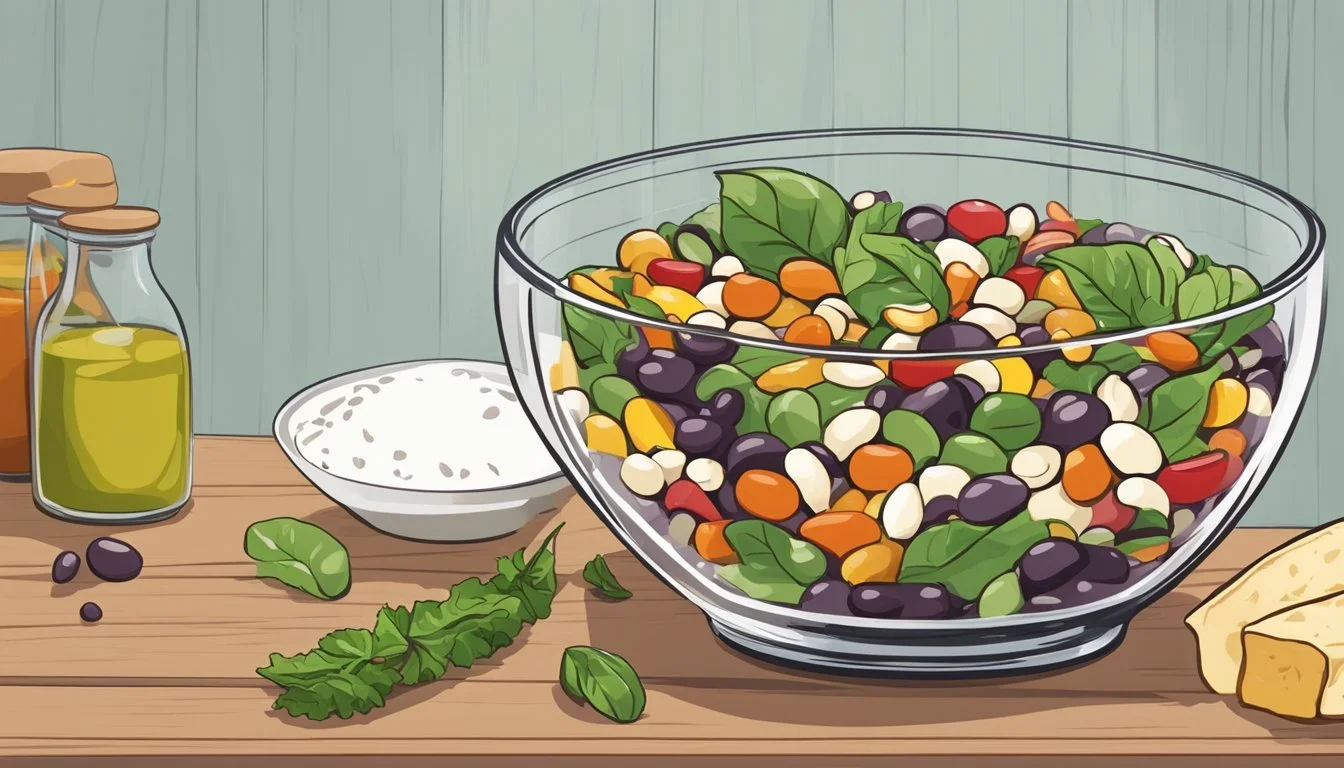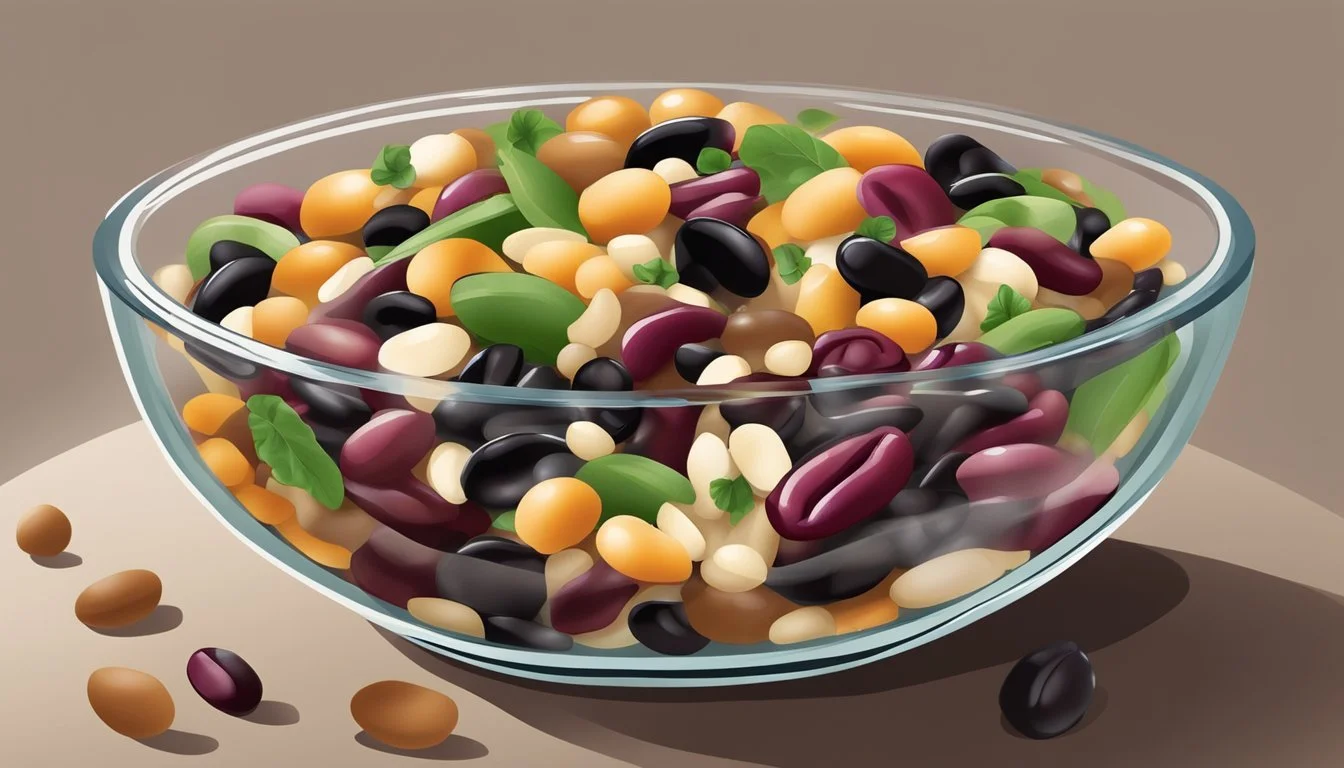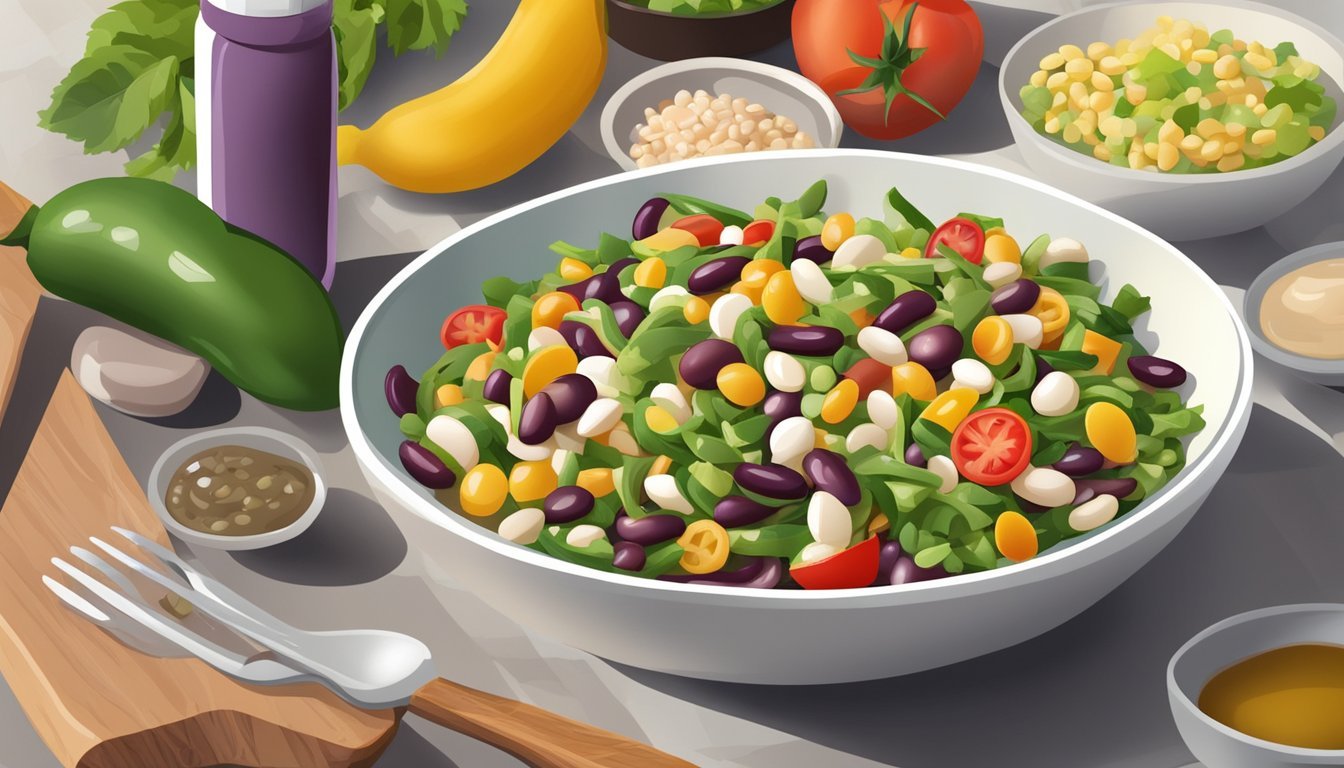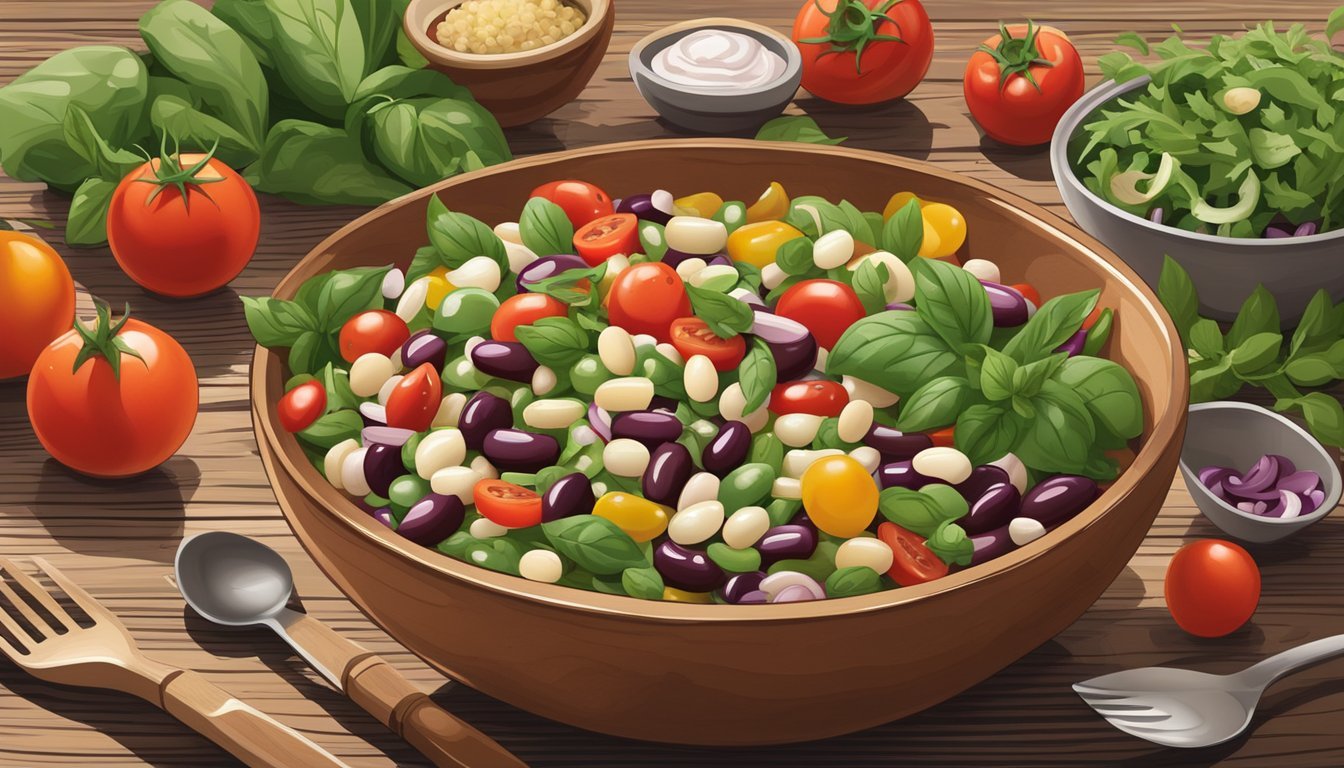How Long Does Gluten-Free Three Bean Salad Last?
Storage Tips and Shelf Life
Wondering how long a gluten-free three bean salad lasts? With vibrant colors and a blend of chickpeas, kidney beans, and green beans, this salad is not only delicious but also rich in fiber and essential nutrients. Ideal for meal preps and gatherings, it's a versatile dish that suits many dietary needs.
The shelf life of a gluten-free three bean salad largely depends on the freshness of the ingredients and how it's stored. When kept in an airtight container in the refrigerator, this salad can last for up to five days without compromising its quality. This makes it a convenient option for quick lunches or side dishes throughout the week.
Proper storage is crucial to retaining the salad's flavors and nutritional value. Ensure the container is sealed tightly to prevent any contamination or loss of freshness. Also, it's a good idea to give it a quick stir before serving to redistribute the dressing and refresh the flavors.
Understanding Gluten-Free Diets
A gluten-free diet is essential for individuals with celiac disease or gluten sensitivity. Gluten-free diets require careful selection of ingredients to ensure no gluten is inadvertently consumed.
Importance of Gluten-Free Ingredients
Choosing gluten-free ingredients is crucial for those who must avoid gluten. Gluten is a protein found in wheat, barley, and rye. Those with celiac disease can experience severe health issues if they consume gluten. Therefore, ingredients must be thoroughly checked for gluten content.
For salads, using gluten-free canned beans such as kidney beans, chickpeas, and black beans is vital. Always ensure these beans are labeled gluten-free. Some products may be cross-contaminated during processing, so choosing certified gluten-free brands is advisable.
Identifying Gluten-Free Beans
Beans are naturally gluten-free, making them a safe and nutritious option for gluten-free diets. Canned beans such as kidney beans, chickpeas, and black beans can be used in various dishes, including salads.
When purchasing canned beans, check the labels for any gluten-containing additives or cross-contamination warnings. Some brands may add sauces or spices that contain gluten, so reading the ingredient list is essential. Opt for beans labeled as gluten-free to ensure safety.
By focusing on properly selected ingredients, individuals can maintain a healthy and safe gluten-free diet.
Ingredients and Substitutions
Creating a gluten-free three bean salad involves selecting the appropriate beans, herbs, seasonings, and dressing. Here are specific choices and substitutions to make sure your salad is both tasty and suitable for a variety of dietary preferences.
Choosing the Right Beans
Beans are the core ingredient of this salad. Kidney beans are a popular choice for their robust flavor and texture. Green beans offer a fresh, crisp bite, while garbanzo beans (chickpeas) add a hearty element. For variations, consider using pinto beans, cannellini beans, or navy beans.
Each bean type brings a unique texture and taste. Yellow wax beans can replace green beans for more color and a slightly different flavor, making them a versatile option in your mix.
Herbs and Seasonings
Herbs and seasonings elevate the flavor profile of your salad. Fresh parsley is commonly used for its bright, fresh taste. Red onion adds a sharp bite and color contrast. To season, sea salt and black pepper are essential basics, enhancing the natural flavors of the ingredients.
For an extra kick, add a pinch of cayenne pepper. Dill or thyme can be included for additional depth, while chopped cilantro or basil can bring a fresh twist to the classic salad.
Dressing Variations
The dressing is crucial for bringing all the elements together. A simple vinaigrette made from olive oil and apple cider vinegar offers a tangy, balanced taste. Alternatively, red wine vinegar can be used for a slightly different acidic profile. Extra virgin olive oil provides a richer, more robust flavor.
For sweetness, pure maple syrup or sugar can be added to balance the tanginess of the vinegar. Dijon mustard brings a sharp, tangy note that complements the beans well. Other options include lemon juice or lime juice for a citrusy brightness. Adjust the salt and pepper to taste for a perfect finish.
Nutritional Benefits
Gluten-free three bean salad offers a range of essential nutrients and dietary fiber, making it a valuable addition to any diet. It is particularly noted for its balanced macronutrient profile and high fiber content.
Macro and Micronutrients
Three bean salad is rich in macronutrients, including proteins and carbohydrates, with minimal fats. This makes it a great choice for those seeking balanced nutrition without extra calories.
Protein: The inclusion of chickpeas, kidney beans, and cannellini beans ensures a good protein supply, essential for muscle repair and growth.
Calories: This salad is generally low in calories, making it suitable for weight management.
Potassium: Beans are a good source of potassium, which helps in maintaining proper muscle and nerve function.
Dietary Fiber Focus
Fiber: The salad is high in dietary fiber, aiding in digestion and promoting satiety. This can help regulate blood sugar levels and support weight management.
Soluble and Insoluble Fiber: Both types of fiber are present, which help in reducing cholesterol levels and improving bowel health.
Nutrition Facts: On average, a serving contains 5-7 grams of fiber. This contributes significantly to daily fiber intake recommendations.
In summary, a gluten-free three bean salad is not only tasty but also nutritionally beneficial, making it a perfect choice for health-conscious individuals.
Preparation Techniques
Proper preparation of a gluten-free three bean salad involves following specific steps for cooking the beans, assembling the salad, and preparing the dressing. Attention to detail ensures the salad is both tasty and safe to eat.
Bean Cooking Instructions
Fresh beans should be rinsed and sorted to remove any debris. For dried beans, soak them overnight or use the quick soak method by boiling for two minutes, then letting them sit covered for an hour. After soaking, drain and rinse the beans.
Cook the beans in a large pot with ample water, simmering until tender. Times vary; chickpeas can take up to 90 minutes, while kidney and cannellini beans may be done in 45 minutes. Drain and rinse to cool before use.
Salad Assembly
In a large mixing bowl, combine the cooked and cooled beans. Common choices include chickpeas, kidney beans, and cannellini beans. Add finely chopped vegetables such as onions, red peppers, and parsley.
Toss the ingredients gently to mix. This combination ensures a uniform distribution of flavors and textures in each bite. As an option, add jalapenos and cilantro for extra flavor. Keep the mixture chilled until ready to dress and serve.
Dressing Preparation
Prepare the dressing in a small bowl or a mason jar. Typical ingredients include:
3 ½ tbsp apple cider vinegar
1 tbsp pure maple syrup
1 - 1 1/2 tsp Dijon mustard
½ + 1/8 tsp sea salt
Freshly ground black pepper to taste
Whisk or shake until the dressing is fully combined. Pour the dressing over the bean mixture and toss to coat evenly. Allow the salad to sit for at least an hour in the refrigerator before serving to enhance the flavors.
Shelf Life and Preservation
A gluten-free three bean salad can stay fresh for several days when properly stored. The shelf life largely depends on refrigeration practices and whether freezing is considered for long-term storage.
Refrigeration Guidelines
Bean salad should be refrigerated in an airtight container to maintain its freshness. Consume within 3-4 days to ensure optimal taste and food safety. Make sure the salad is stored at or below 40°F (4°C) to prevent bacterial growth.
Adhere to the following tips:
Use fresh ingredients to maximize shelf life.
Avoid leaving the salad at room temperature for extended periods.
Label containers with dates to track freshness.
Freezing and Thawing
Freezing can extend the shelf life of a three bean salad, though the texture may be slightly altered upon thawing. Freeze in airtight containers or heavy-duty freezer bags, removing as much air as possible.
Follow these steps:
Portion the salad into smaller servings for easier thawing.
Label and date each container.
Thaw in the refrigerator overnight before serving.
Be mindful that the texture of the beans might become softer after freezing and thawing, which may affect the salad’s overall appeal.
Serving and Pairings
When serving gluten-free three bean salad, consider both the event and the dishes you will pair it with to enhance the overall dining experience. This versatile salad can be adapted for various occasions and pairs well with a range of complementary dishes.
Occasions and Events
Gluten-free three bean salad is an excellent choice for picnics, potlucks, and summer gatherings. Its vibrant colors and fresh taste make it a favorite for outdoor events and casual get-togethers.
Being naturally vegan, it fits well into menus designed for people with diverse dietary needs. It's also great for BBQs, as it complements grilled foods perfectly. Preparing the salad in advance means you can easily transport and serve it at room temperature.
Complementary Dishes
This salad pairs wonderfully with a variety of mains and sides.
For a classic pairing, serve it with burgers or veggie burgers, providing a refreshing contrast. It's also a fantastic side dish for BBQs, working well with grilled chicken, steaks, or tofu.
To create a balanced meal, consider serving it alongside hearty soups or stews. This adds a wholesome element to the meal. Additionally, you can vary the ingredients slightly to match the flavors of your main dishes, ensuring harmony in your menu.
Tips and Tricks
Keeping a gluten-free three-bean salad fresh and delicious involves a few key steps. These tips will help enhance the flavor, maintain the perfect texture, and ensure effective make-ahead strategies for better meal prep.
Enhancing Flavor
Use a mix of fresh and vibrant ingredients like fresh herbs such as parsley and cilantro. These add bright flavors that complement the beans.
Adding bell peppers and corn can add a crunch and sweetness to the salad. Incorporating red onion, garlic, and white onion can give a deep, savory taste. A tangy vinaigrette made with olive oil, cider vinegar, and a touch of sugar can balance the flavors perfectly.
Kosher salt and freshly ground black pepper are essential to enhance and balance the other flavors. Minimal salt goes a long way in bringing out the individual tastes of the ingredients in the salad.
Perfect Texture
Achieving the perfect texture is crucial for a bean salad to avoid mushiness. Crisp vegetables like celery, bell peppers, and red onions provide contrast to the softer beans.
Beans should be tender yet firm. Overcooking the beans can lead to a mushy texture that is less appealing. Rinse canned beans thoroughly to remove excess starch, which helps maintain a firm texture. Blanch any green beans lightly to keep them crisp.
Adding tomatoes just before serving keeps them firm and stops them from making the salad watery. Mixing beans gently helps keep their shape intact while allowing flavors to meld.
Make-Ahead Strategies
A three-bean salad is ideal for make-ahead meal prep. Prepare all ingredients a day before serving for the best flavor development. Store the salad in an airtight container to keep it fresh in the fridge.
Separately store the vinaigrette and fresh herbs, adding them to the salad before serving. This prevents the salad from becoming too soggy and helps maintain the crispness of the vegetables.
Proper storage means the salad can last up to 5 days in the fridge while retaining its taste and texture. This makes it suitable for BBQs, picnics, and family gatherings. For optimal freshness, taste and adjust the seasoning before serving.








